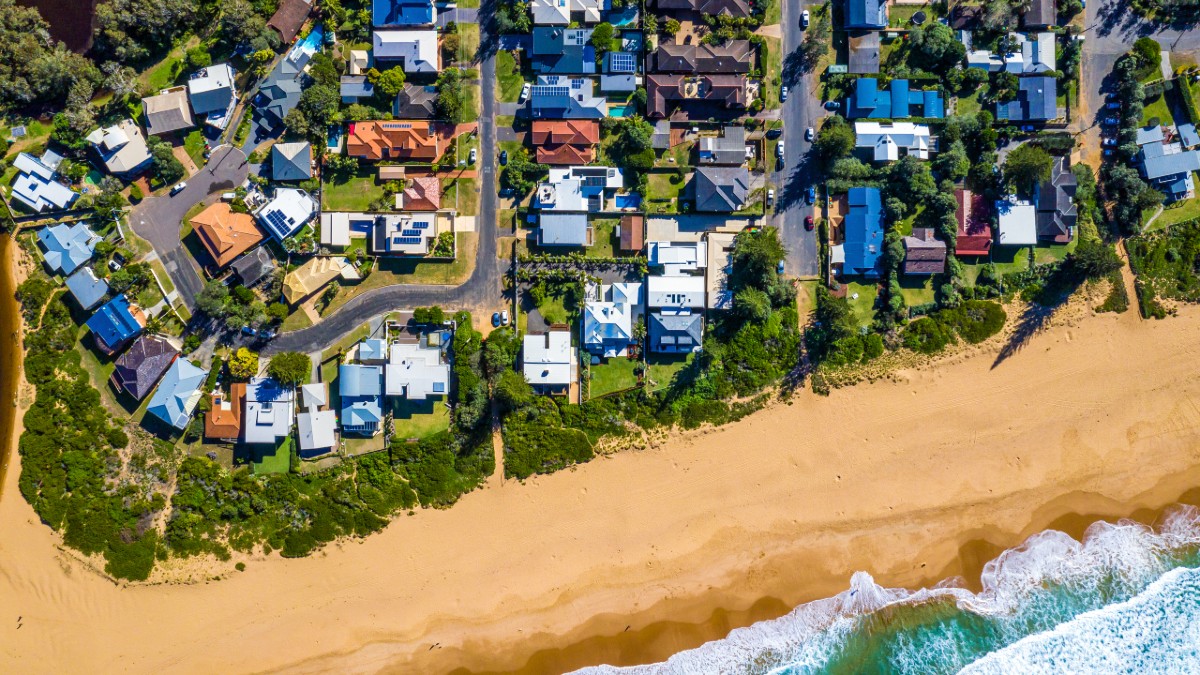Property: ANZ says no rate cuts this year as tide of new listings keeps rising

Via Getty
ANZ has become the first big four bank to kill the dream and scrap forecasts of an Aussie interest rate cut this year.
Having previously predicted the first rate cut would come in November this year, ANZ economists now reckon the Reserve Bank of Ours will remain on hold until February 2025.
The mood-dampener from ANZ head of Australian economics Adam Boyton comes as a tide of new homes for sale become available.
According to PropTrack’s latest, listings nationally on realestate.com.au are up and away some 18.5% from a year ago.
Across the country’s combined capitals, new listings were up 23.6% year-on-year with the ACT, Melbourne, and Sydney leading growth.
“Now past the seasonal impacts from shifting Easter timing, new listings in May displayed the strength seen earlier in the year to be 12.6% higher over the calendar year-to-date compared to the same period in 2023,” PropTrack says.
New listings are higher in every capital city (except Hobart. Because: Hobart).
New listings in the combined regional markets were 7.5% higher over the month and 10.4% higher year-on-year, with only regional WA (-0.3%) and regional NT (-16.3%) recording a year-on-year decline.
Altogether, PropTrack says the total listings on the platform were 2.7% higher over the month and 8.2% higher year-on-year, making it the highest May for active listings since 2020.
The ACT (+32.4%), Melbourne (+24.7%) and Sydney (+17.7%) have seen the largest increase in total listings over the past year among capital cities, while Perth (-23.4%), Adelaide (-8.7%) and Brisbane (-3.4%) have recorded falls.

“Hard to see”
Over at the ANZ, Mr Boyton says there’s several factors behind the divergence in the bank’s forecast path for rates.
“Since November 2022, we have expected that the first cash rate cut in Australia this cycle would be in November 2024. More recently, however, we have been cautioning that the risks around that view were skewed to a later start to the easing cycle.
Mr Boyton says it’s unlikely now that the RBA will have the confidence to move by the November meeting.
It comes as the US Federal Reserve then held rates steady at its meeting overnight despite trimming its forecast for the number of rate cuts this year down to one, from two in March and three last December.
US inflation fell to 3.3% in May, down from 3.4% in April. Month-on-month, the CPI was steady in April, whereas the forecast was for a rise of 0.1%.
Monthly and yearly core CPI readings (which exclude the volatile prices associated with energy and food) were also lower than expected/slightly better than the reports for April and March.
The Fed on hold means the cost of cash in the US stays at a 23-year high.
At home however, not only did the local central bank start lifting rates later than most, but the recent overshot Consumer Price Index (CPI) seems to imply prices won’t return to the RBA’s 2-3% inflation target until at least the end of next year.
The RBA is widely expected to remain on hold next week, with most of the goggling to be espied at the now usual post-match press conference with the bank’s governor Michele Bullock under tight scrutiny for any clues on the path forward.
From the ANZ, however – it’s all academic.
“The stronger than expected Q1 CPI also makes it hard to see the RBA being sufficiently confident that inflation will return to and stay in the band by the time the November meeting comes around,” Boyton says.
“Accordingly, we now expect the first cash rate cut in February 2025.”
Related Topics
UNLOCK INSIGHTS
Discover the untold stories of emerging ASX stocks.
Daily news and expert analysis, it's free to subscribe.
By proceeding, you confirm you understand that we handle personal information in accordance with our Privacy Policy.








